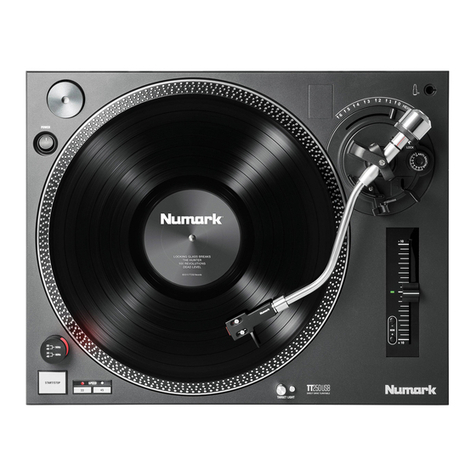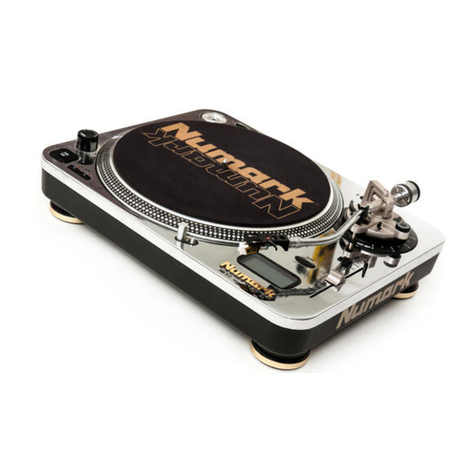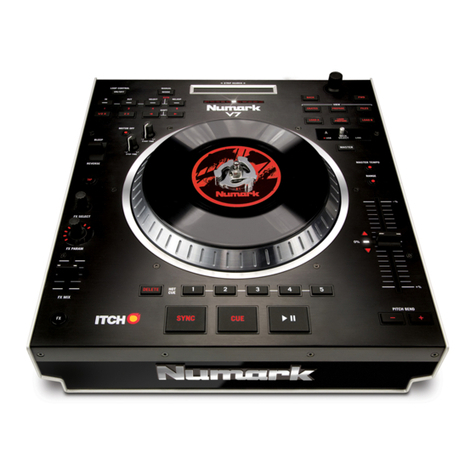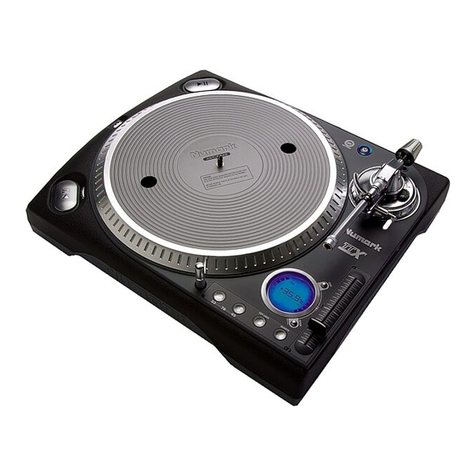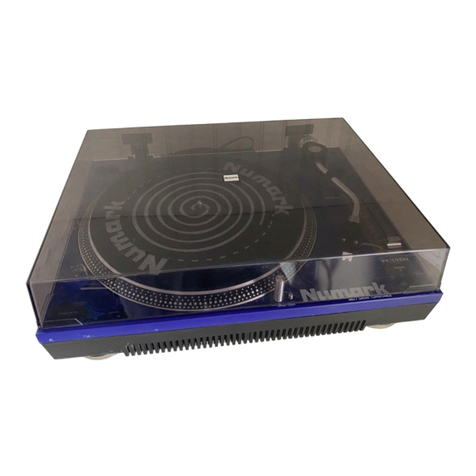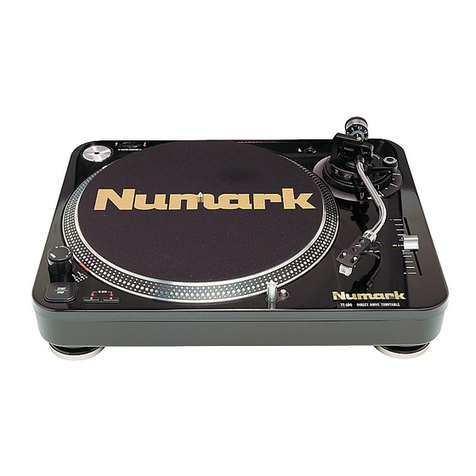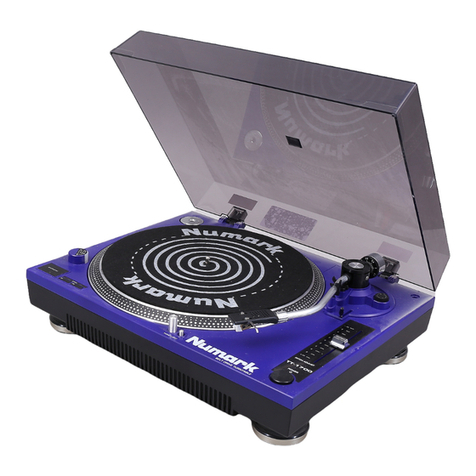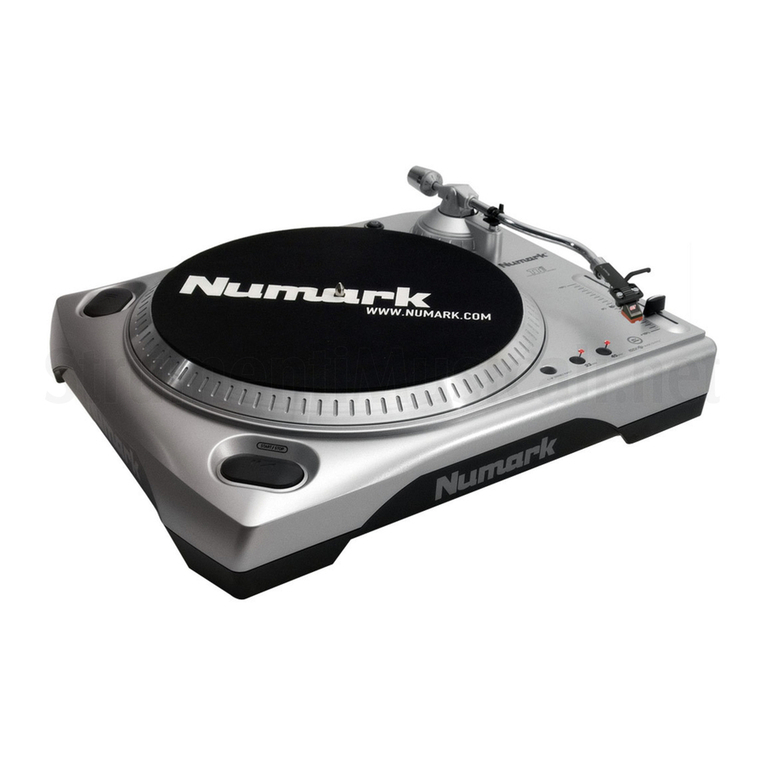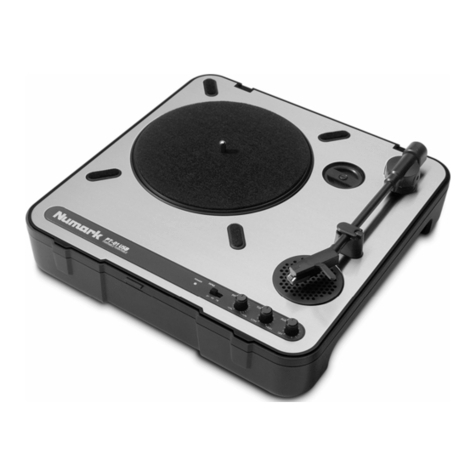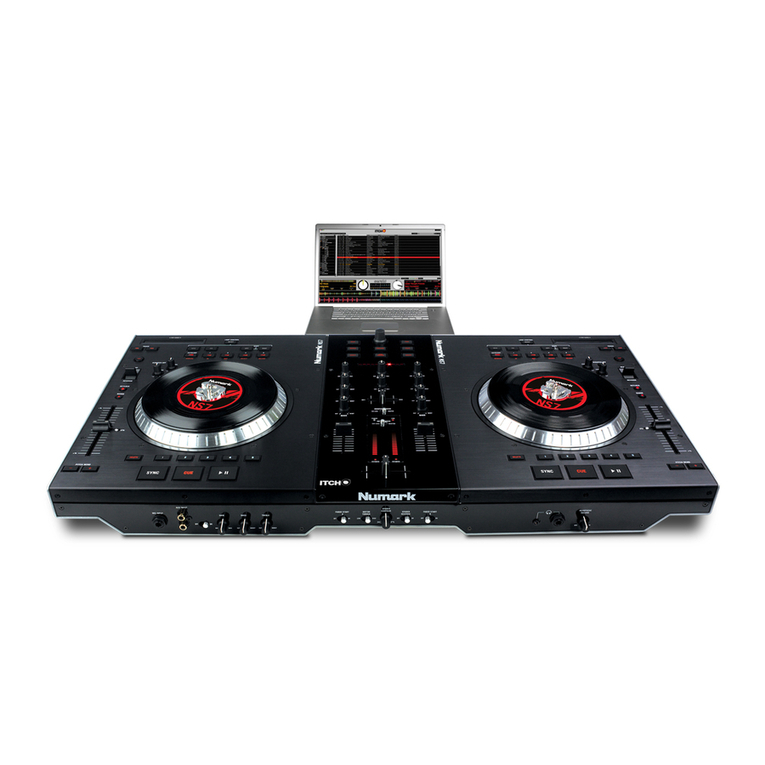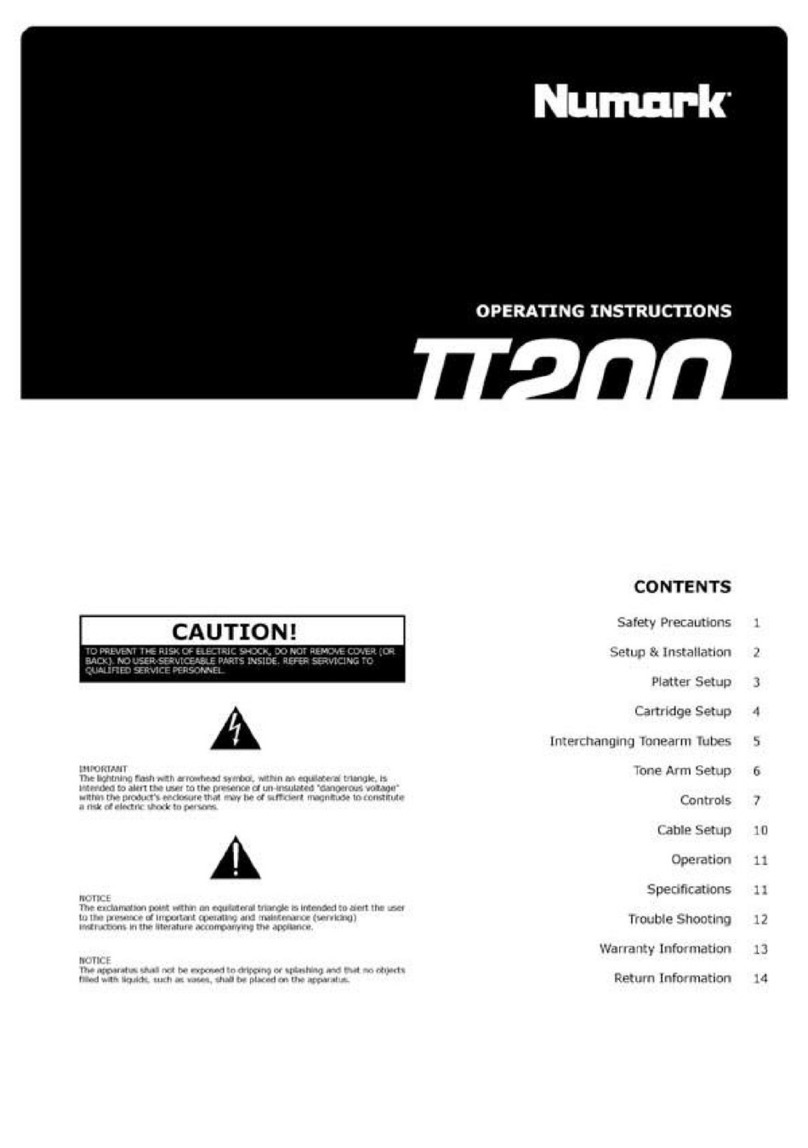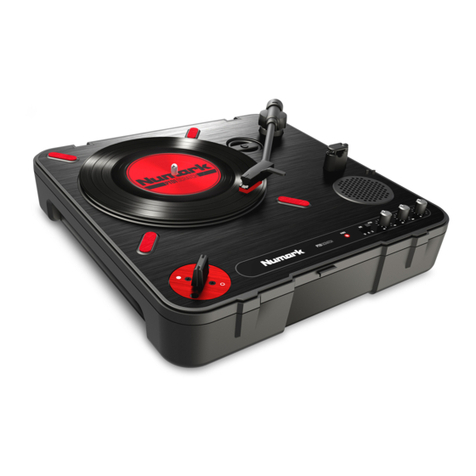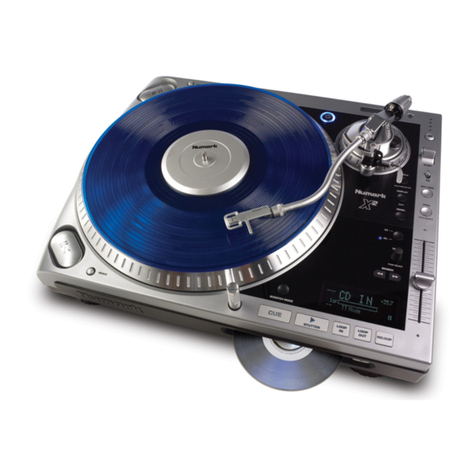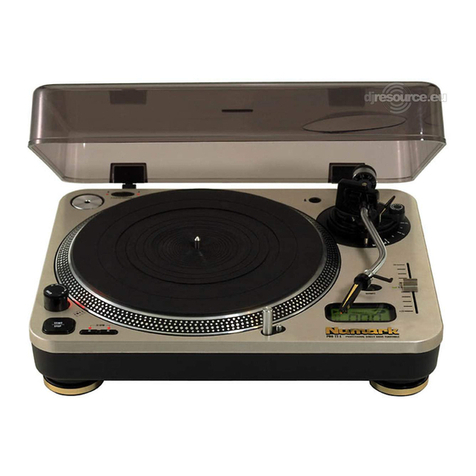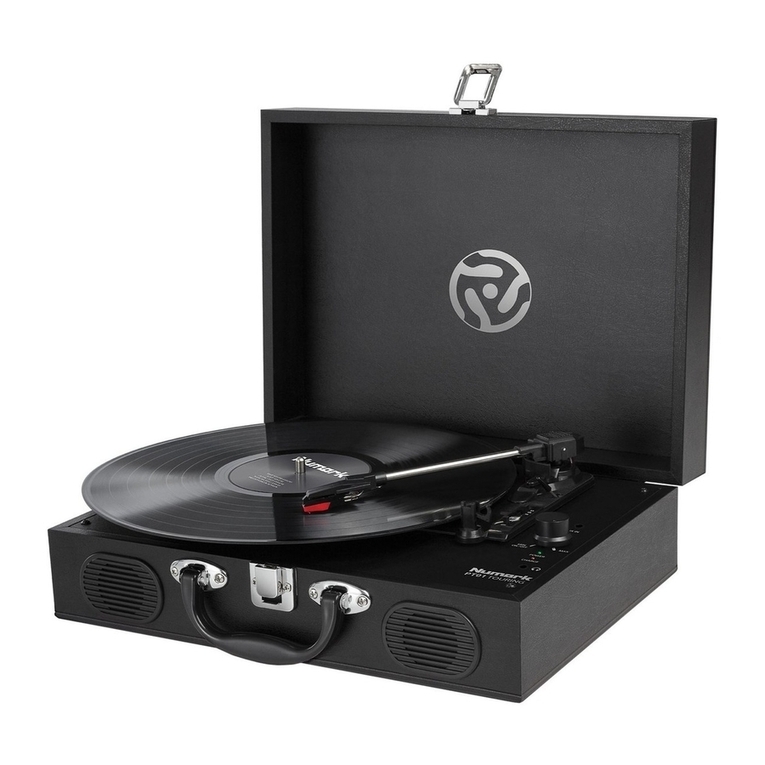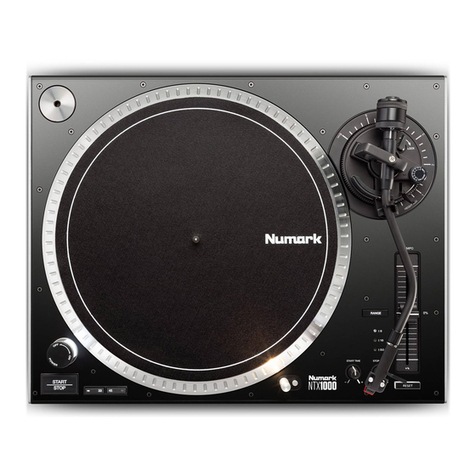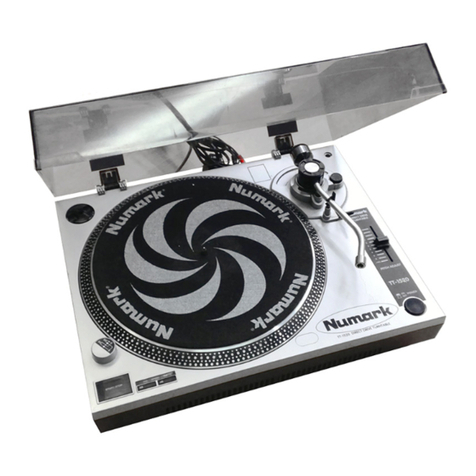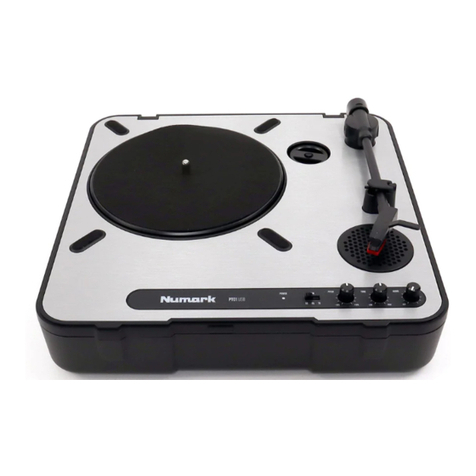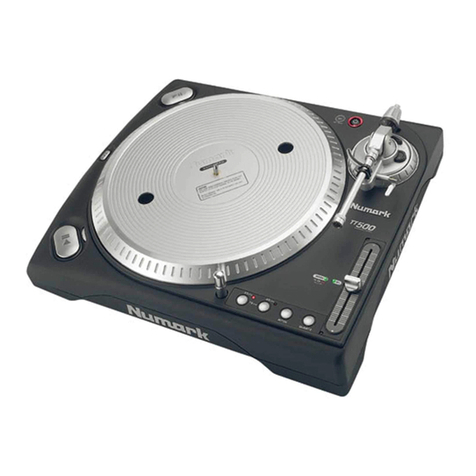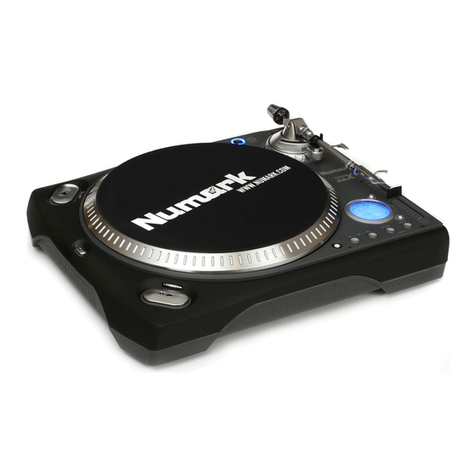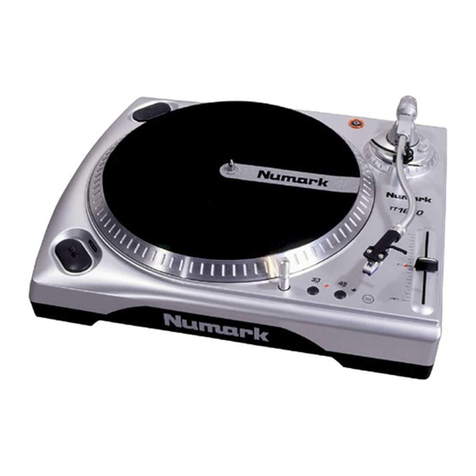10
Interchanging the Pitch Fader and
Button Cartridges
The TTXUSB unique design allows the
configuration of the PITCH FADER and BUTTON
CONTROLS to be interchanged depending on the
orientation of the turntable. In the event of
damage or excessive wear, these components
should only be replaced with NUMARK
COMPATIBLE PARTS. Check the nearest NUMARK
DEALER for additional information.
1. Turn the turntable off or unplug it from its
power source.
2. Remove the PITCH FADER KNOB and store
it in a safe place.
3. Use the included SERVICE TOOL to remove
the two screws that secure the PITCH
FADER CARTRIDGE PLATE. Once removed,
place these screws in a safe place.
4. Use the flat side of the SERVICE TOOL to
pry off the PITCH FADER CARTRIDGE PLATE
by inserting it into the cutaway at the
center of the plate and prying upwards
5. Use the included SERVICE TOOL to remove
the two screws that secure the BUTTON
CARTRIDGE PLATE. Once removed, place
these screws in a safe place.
6. Using the flat side of the SERVICE TOOL
again, pry off the BUTTON CARTRIDGE
PLATE by inserting it underneath the plate
and prying upwards (see picture.)
7. The cartridges may now be safely removed.
Begin this process by using the flat side of
the SERVICE TOOL to pry the PITCH FADER
CARTRIDGE out of the turntable (see
picture.) Once removed, detach the wiring
clip from the bottom of the cartridge.
8. Remove the Button Cartridge now by using
the SERVICE TOOL to pry out the cartridge
from the turntable. Once removed, detach
the wiring clip from the bottom of the
cartridge (see picture.)
9. The cartridges may now be safely
interchanged. Find the WIRING CLIP for the
PITCH FADER CARTRIDGE and connect it to
the bottom of the cartridge (see picture.)
10. Reinsert the PITCH FADER CARTRIDGE into
the desired bay of the turntable. Take
utmost care NOT to pinch the unused
harness underneath the cartridge. If
inserted correctly, the cartridge should rest
firmly in the bay.
11. Find the WIRING CLIP for the BUTTON
CARTRIDGE and connect it to the bottom of
the cartridge (see picture.)
12. Reinsert the BUTTON CARTRIDGE into the
desired bay of the turntable. Take utmost
care NOT to pinch the unused harness
underneath the cartridge. If inserted
correctly, the cartridge should rest firmly in
the bay.
13. Re-secure the BUTTON CARTRIDGE PLATE
and the FADER CARTRIDGE PLATE by
inserting the tabbed sides into the turntable
first.
14. Use the included SERVICE TOOL to tighten
the four screws that secure the plates to the
turntable body. Do not over tighten these
screws.
15. Reinstall the PITCH FADER knob and power
the turntable on.
